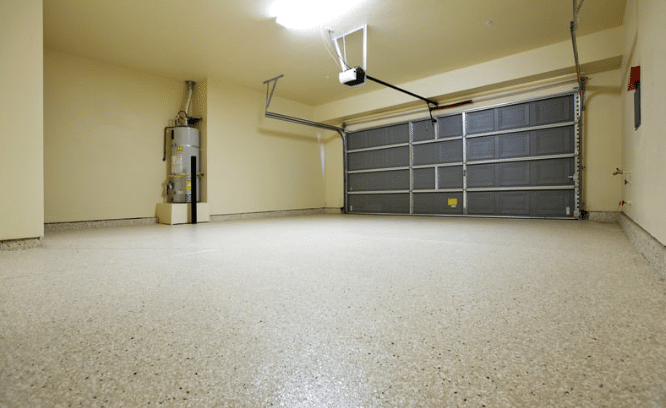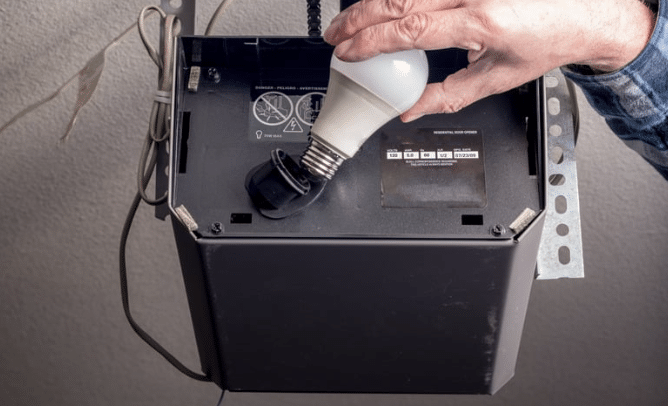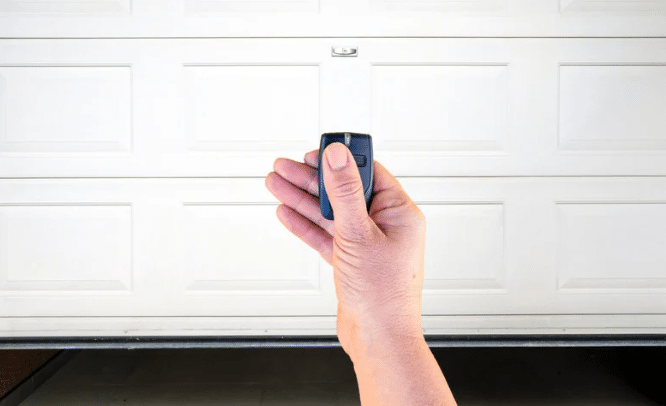Avoid costly repairs—know which garage door opener parts need regular replacement and how to spot the signs.
A reliable garage door opener is essential to modern home convenience and security. However, like any mechanical system, it relies on numerous parts working together in harmony. Understanding the key parts of a garage door opener and knowing when to replace them can help avoid unexpected breakdowns and costly repairs.

Over time, parts for a garage door opener can wear out due to regular use, environmental factors, and lack of maintenance. Recognizing and proactively addressing the signs of wear ensures that your garage door operates safely and efficiently. Whether you are a homeowner looking to perform routine upkeep or planning a full system upgrade, having a clear grasp of these components is invaluable.
In this comprehensive guide, we’ll explain the main parts of a garage door opener, explain their functions, and provide practical advice on when replacement is necessary.
Why It’s Important to Know the Parts for a Garage Door Opener
Knowing the parts of a garage door opener offers several advantages that contribute to the overall health of your garage door system.
Proactive Maintenance
Familiarity with the individual components of your garage door opener allows you to identify potential issues early, often before they turn into major problems. By knowing what each part looks like and how it should function, you can perform regular inspections and preventative maintenance. This proactive approach helps extend the overall life of your opener, minimizes wear and tear on the system, and reduces the likelihood of unexpected breakdowns that could inconvenience your daily routine.
Improved Safety
Garage doors are among the heaviest moving objects in a home, and their safe operation depends on several critical components functioning correctly. Understanding when essential parts—such as sensors, springs, or cables—need repair or replacement is crucial for maintaining the safety of your household. A malfunctioning garage door opener can pose significant risks to your family, pets, and property. Staying informed about the parts and their condition helps ensure that built-in safety features remain effective and that your garage door operates smoothly and securely.
Cost Savings
Knowledge of the parts of a garage door opener also contributes to cost savings in both the short and long term. Timely identification and replacement of worn or malfunctioning parts can prevent secondary damage to other components of the system. For example, a neglected chain or belt could put undue stress on the motor, leading to costly repairs or even the need for a complete system replacement. Regular maintenance and timely part replacement help you avoid these expensive scenarios and maintain a reliable, cost-efficient garage door system.
Better Communication with Professionals
When the time comes to consult a professional for maintenance or repair, having a working knowledge of your garage door opener’s components allows for clearer and more informed communication. You’ll be better equipped to describe symptoms, ask pertinent questions, and understand the technician’s recommendations. This can lead to more accurate diagnoses, more efficient service, and greater confidence that you’re receiving the right solutions for your needs.
Essential Parts for a Garage Door Opener & When to Replace Them
Let’s explore the most important parts for a garage door opener and identify the key signs that indicate it’s time for replacement.
Motor

Function: Powers the movement of the garage door by driving the opener mechanism.
When to Replace:
- You hear unusual grinding, humming, or buzzing noises during operation.
- The door moves slowly, hesitates, or fails to respond.
- The motor frequently overheats or shuts down mid-cycle, even after cooling off.
Drive Mechanism (Chain, Belt, or Screw)
Function: Transfers the motor’s power to physically open and close the garage door.
When to Replace:
- Chain Drive: Signs of excessive slack, rust, or complete breakage.
- Belt Drive: Visible cracks, fraying, stretching, or loss of tension.
- Screw Drive: Worn threads, uneven or jerky movement, or loud operation.
Gear and Sprocket Assembly
Function: Connects the motor to the drive mechanism and plays a critical role in transferring motion to the door.
When to Replace:
- Persistent loud clicking, grinding, or scraping sounds.
- The motor runs, but the door does not move.
- You notice worn, stripped, or damaged gears or sprockets.
Limit Switches
Function: Controls where the door stops during the opening and closing cycles, ensuring it doesn’t travel too far.
When to Replace:
- The door no longer fully opens or closes.
- It stops at inconsistent points or changes its stopping point over time.
- Manual adjustments to the limits do not correct the issue.
Capacitor
Function: Helps the motor start and run smoothly by providing an initial surge of power.
When to Replace:
- The motor emits a humming noise but doesn’t engage.
- Door movement becomes weak, inconsistent, or fails entirely.
- The motor struggles to start, especially in colder temperatures.
Safety Sensors (Photo-Eyes)
Function: Prevents the garage door from closing if an object, person, or pet is detected in its path.
When to Replace:
- The door reverses without any visible obstruction.
- The LED indicator lights on the sensors blink irregularly or remain off.
- The sensors appear visibly cracked, dirty, or misaligned despite attempts to clean or realign them.
Remote Controls & Wall Switches

Function: Allow you to operate the garage door manually or remotely.
When to Replace:
- The remote or wall switch responds inconsistently or intermittently.
- Buttons stick, become unresponsive, or fail to register input.
- Replacing the battery does not resolve the problem.
Circuit Board (Logic Board)
Function: Acts as the brain of the garage door opener, managing all communication and operational functions.
When to Replace:
- You experience random or erratic behavior from the door opener.
- Programming is lost or connectivity issues arise with remotes or smart devices.
- The system frequently requires power resets to function properly.
Trolley & Carriage
Function: Moves along the rail to push or pull the garage door during operation.
When to Replace:
- The door jerks, stalls, or hesitates during opening and closing.
- The trolley or carriage shows visible cracks, deformation, or excessive wear.
Rail
Function: Provides the guiding path along which the trolley moves.
When to Replace:
- The rail is visibly bent, warped, or misaligned.
- You notice excessive friction, rubbing, or unusual noise as the door operates.
- The trolley no longer moves smoothly along the rail, even after lubrication.
Maintenance Tips for Prolonging the Life of Parts for a Garage Door Opener
Regular maintenance is key to keeping your garage door opener running smoothly and extending the life of its components. Here are some practical tips to help you get the most out of your system:
1. Lubricate Moving Parts Regularly
Apply a high-quality, silicone-based lubricant to all moving parts of the garage door opener, such as the drive chain or belt, hinges, rollers, and tracks. Lubrication reduces friction, prevents wear, and ensures quieter operation. Aim to lubricate these components every six months or more often in high-use households.
2. Inspect and Test Safety Sensors Monthly
Safety sensors (photo-eyes) play a crucial role in preventing accidents. Clean the sensor lenses with a soft cloth and properly align them. Test the sensors by placing an object in the door’s path; the door should automatically reverse. Perform this test at least once a month to ensure continued safe operation.
3. Check for Loose Hardware
Vibration and regular use can cause bolts, screws, and other hardware to loosen over time. Periodically inspect all fasteners on the opener, mounting brackets, and door components. Tighten any loose hardware to maintain structural integrity and prevent strain on the opener.
4. Replace Batteries in Remote Controls Annually
Even if your remote controls appear to be working fine, replacing the batteries once a year is a good practice. Weak batteries can cause inconsistent operation or loss of programming. Keeping fresh batteries ensures reliable remote control performance.
5. Keep Components Clean and Dust-Free
Dirt, dust, and debris can accumulate on the opener’s components, particularly on the motor housing, circuit board, and safety sensors. Periodically clean these areas with a dry or slightly damp cloth. Avoid using harsh chemicals that could damage sensitive parts. Keeping your opener clean promotes efficient operation and reduces the risk of malfunctions.
Frequently Asked Questions
What are garage door sections?
Garage door sections are the horizontal panels that make up the face of the garage door. They are connected by hinges, allowing the door to bend and roll up along the tracks when opening.
What is a garage door mechanism called?
The overall mechanism that operates a garage door is called the garage door opener system. It includes the motor, drive system (chain, belt, or screw), trolley, and safety components.
What are the parts on a garage door opener?
A garage door opener typically includes the motor unit, rail or track, trolley, chain or belt, safety sensors, remote controls, and a wall-mounted control panel. Some models may also include a backup battery and lighting.
What is included in a garage door opener?
A garage door opener package usually includes the motor unit, rail assembly, trolley, chain or belt, wall control panel, safety sensors, and remote transmitters. Some packages may also include a keypad and additional features like Wi-Fi connectivity.
What is the garage door trim called?
The trim around the outside of the garage door is called garage door stop molding or exterior trim. It helps seal the edges of the door against the frame, preventing drafts, water, and pests from entering.
Conclusion
Understanding the parts of a garage door opener and knowing when to replace them is essential for maintaining its reliability and safety. Proactive maintenance and timely part replacements can prevent inconvenient breakdowns and extend the life of your opener.
If you notice signs of wear or malfunction, don’t wait until a minor issue turns into a major repair. Addressing problems early helps maintain seamless operation and protects your home and family.
For expert assistance in identifying, repairing, or replacing parts for a garage door opener, trust the experienced team at DoorJam Garage Repair. We’re here to keep your system running smoothly and efficiently.
End NOTE
DoorJam Garage Repair proudly serves Raleigh & Durham, NC, with professional garage door services. Whether you need help maintaining or replacing parts for a garage door opener, our skilled team provides personalized solutions tailored to your needs.
Learn more about our company on our About page and explore our full range of new garage door replacement services. We also offer expert garage door repair in Durham, NC, Raleigh, NC, and Wake Forest, NC.
Stay connected via Facebook and Instagram for the latest updates and maintenance tips. Ready to schedule service or learn more? Contact us today through our Contact Us page.
DoorJam Garage
3418 Quarry Rd, Wake Forest, NC 27587, United States
+19199066623
